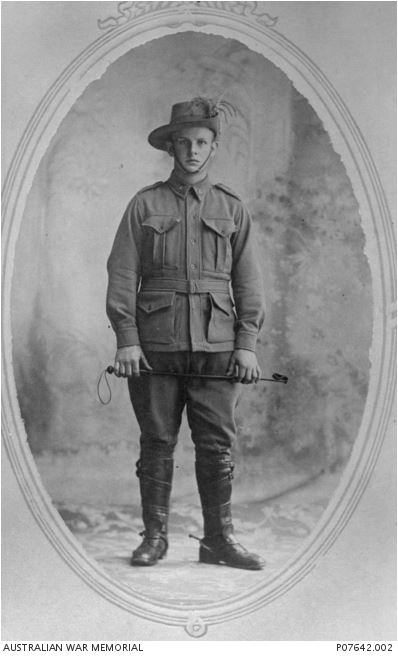Hobart Douglas Firns MID
From Our Contribution
 Australian War Memorial PO7642.002 | |
| Personal Information | |
|---|---|
| Date of Birth | unknown |
| Place of Birth | Jarrahdale, Western Australia |
| Death | 29 Aug 1915 |
| Place of Death | Hill 60, Gallipoli, Turkey |
| Age at Enlistment | 19 years, 3 months |
| Occupation | mill hand (timber) |
| Religion | Church of England |
| Address | Mundijong, Western Australia |
| Next of Kin | Father Mr Charles Firns |
| Military Information | |
| Reg Number | 110 |
| Date of Enlistment | 5 Oct 1915 |
| Rank | Trooper |
| Unit/Formation | 10th Light Horse regiment, A Squadron |
| Date of Embarkation | 8 Feb 1915 |
| Ship Embarked On | HMAT A47 Mashobra |
| Fate | Killed in Action 29 Aug 1915 |
| Monument |
Mundijong Serpentine |
| Medals |
1914-15 Star British War Medal Victory Medal |
Pre War
Known by all as Doug. At the time of his enlistment he was working as a Mill hand at one of the numerous timber mills that surrounded Jarrahdale, where he was born in 1896.
War Service
Given Hobart's familiarity with horses he was signed on as an inaugural member of the 10th Light Horse Regiment, where he joined A Squadron. However prior to the Army finalising his enlistment processes and accepting him, Hobart was required to have his teeth attended to. This he had done by early December 1914.
Hobart was one of the soldiers fighting alongside Lt Hugo Throssel at Hill 60 when Throssel won his VC. "Gallipoli to Tripoli" [Browning & Gill] at page 158 relates the story told by Pte Stanley, one of the few survivors of the group soon after the battle.
"We bomb-throwers did our work behind two barricades. On our left was an embrasure, rather wide and dangerous, on account of the chance of bombs getting home every time. A bomb-proof shelter was erected over part of the embrasure. We stood between number two and shelter, with a sniper. I was at the side of the Lieut. Another chap was in front of him, and the sergeant behind me changing rifles. Bombs arriving were thrown out quickly, and never once was there a casualty from them, bullets doing all the damage. Ferrier got a bullet after the other bomb-thrower (Francis McMahon) had been killed, and fell half under the bomb-proof. The one in front of the Lieutenant was finished at last, after having some miraculous escapes, and being like a wild man (Hobart Firns).
Hobart's date of death is given as the 29th August 1915, after he and his colleagues had held enemy trenches for up to 31 hours before being forced to retreat.
Burial details: Unknown grave, commemorated on the Lone Pine Memorial, Anzac Cove, Turkey.
Award Comment
Firns was Mentioned in Despatches by Sir Ian Hamilton. [1] [2] Recommended for actions 21st - 30th August 1915. The wording of his recommendation (posthumous) was:
For gallantry during attack on the Turkish trenches on Kaiajik Aghala.
Notes
Burial details: Unknown grave, commemorated on the Lone Pine Memorial, Anzac Cove, Turkey.
Hobart's next of kin was his father Charles Firns who moved around with work. He was living at the time of Hobart's enlistment in Serpentine, later moving to Mundijong and then Koorda.
Three brothers also served with the AIF during WW1. Charles Glyn Firns with the 28th Battalion; Frank Thomas Firns, allocated to Artillery but who did not reach the front lines before the armistice; and George Weston Firns who served with the 48th Battalion. While Charles was Wounded in Action in Belgium on 12 Oct 1916 and at Mont St Quentin on 2 Sep 1918, all three returned to Australia during 1919.